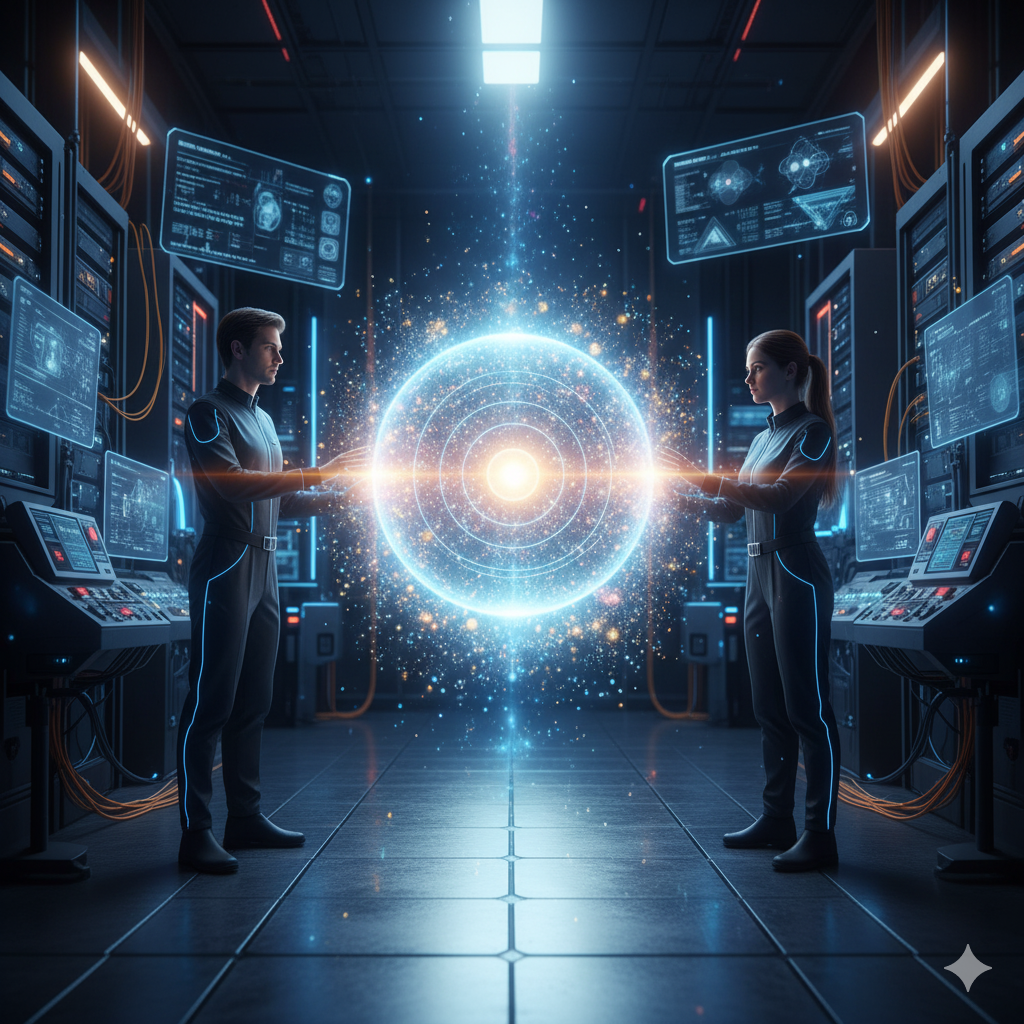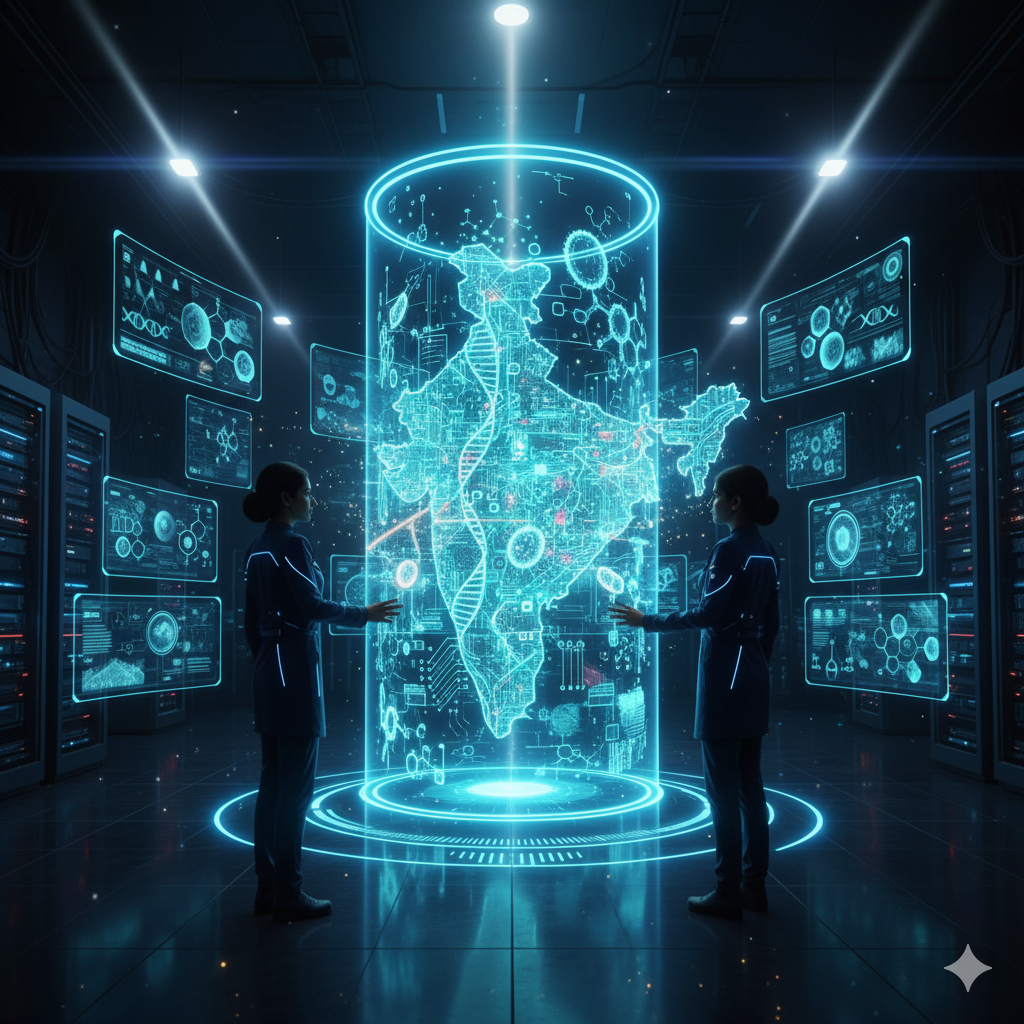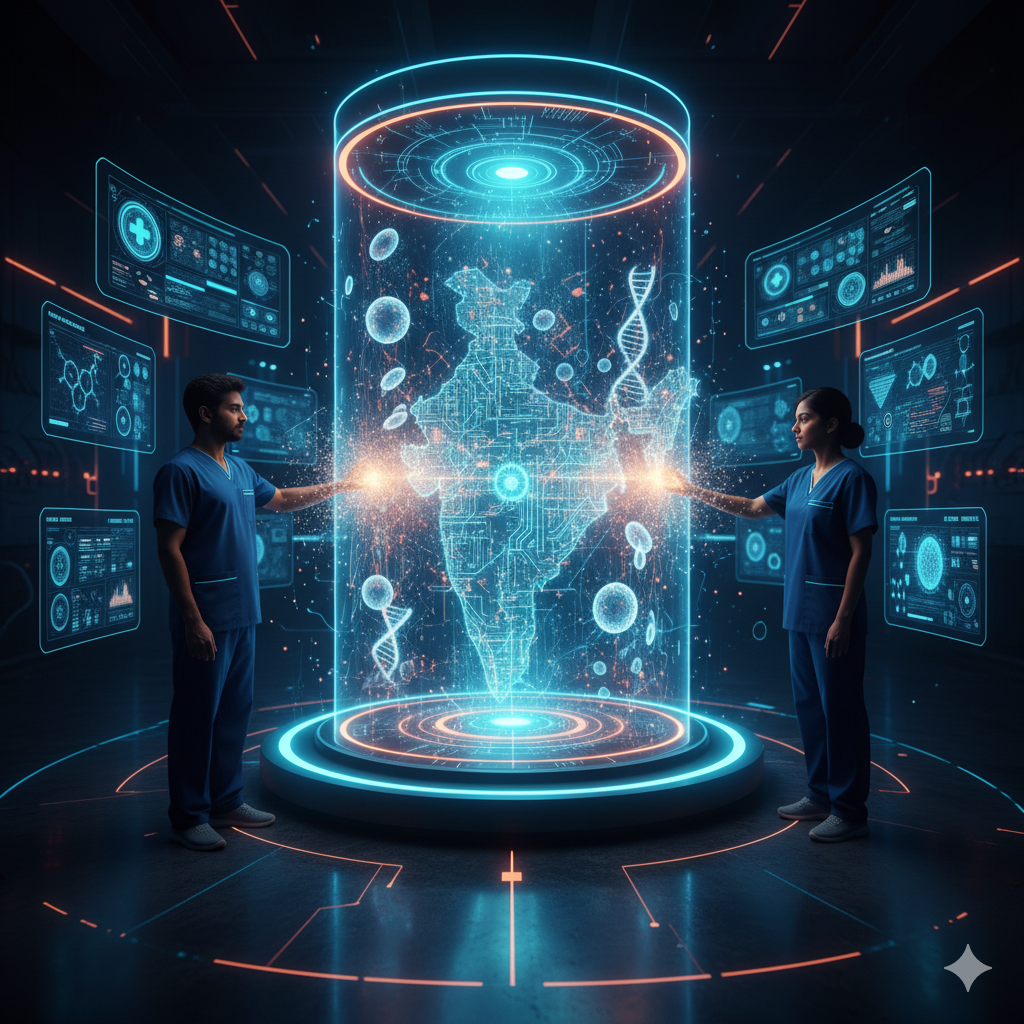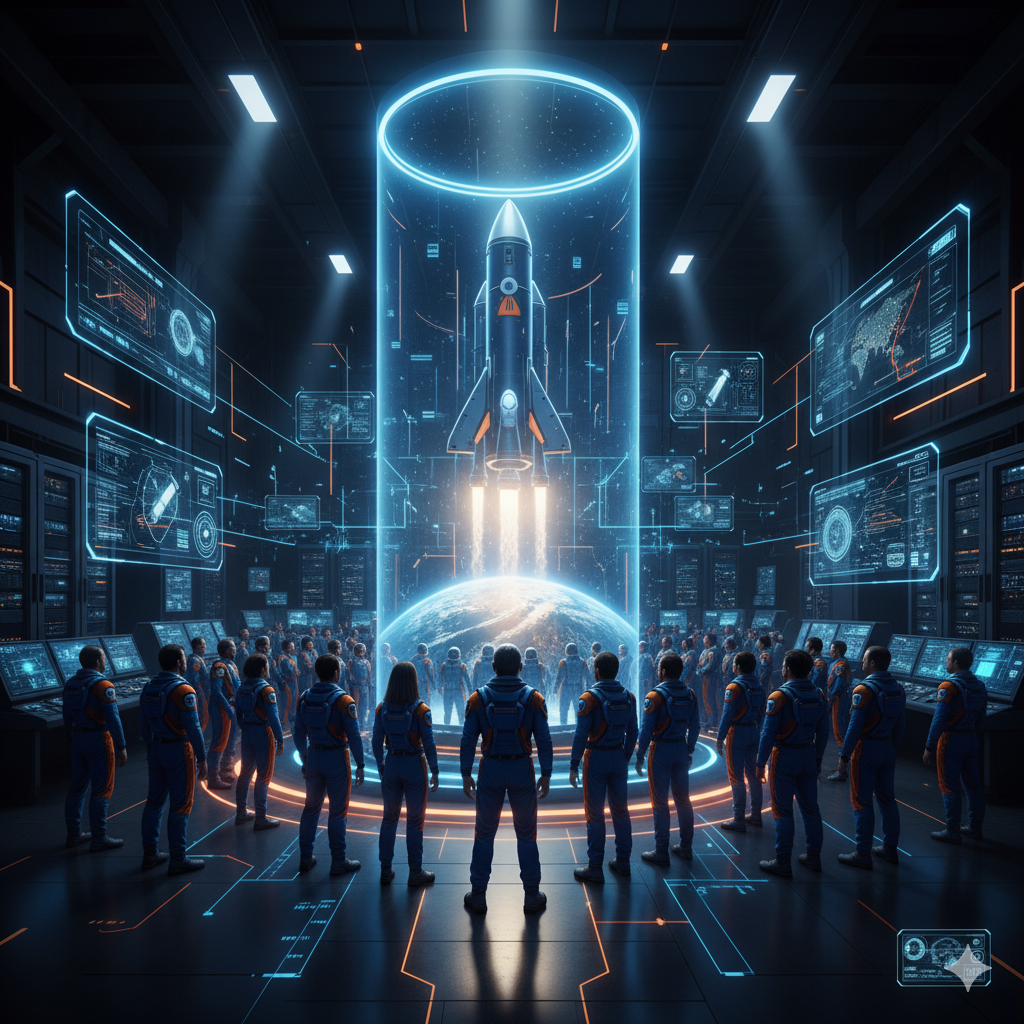Introduction
Holographic communication is revolutionizing the way people interact, bridging the gap between the physical and digital worlds. This technology, powered by holography, artificial intelligence (AI), augmented reality (AR), and 5G connectivity, enables real-time, three-dimensional (3D) communication, creating a more immersive and lifelike experience. Unlike traditional video calls or virtual meetings, holographic communication projects real-time 3D holograms of individuals, objects, or environments, allowing users to interact naturally as if they were physically present.
With applications spanning across industries like healthcare, education, business, entertainment, and defense, holographic communication is set to redefine how humans connect and collaborate in the future. This article explores the technology behind holographic communication, its working principles, real-world applications, benefits, challenges, and future prospects.
1. Understanding Holographic Communication
What is Holographic Communication?
Holographic communication is a form of digital interaction that uses 3D holograms to transmit and receive real-time, full-motion, and interactive images of people or objects. This immersive experience allows participants to engage in lifelike conversations, meetings, and collaborations, making remote interactions more engaging and effective.
How Holographic Communication Works
Holographic communication relies on several advanced technologies to capture, process, transmit, and project 3D holograms in real time:
- Holographic Capture:
- Special cameras and sensors record depth, texture, and movement of a person or object from multiple angles.
- Depth-sensing technologies such as LiDAR (Light Detection and Ranging) and stereo imaging help create accurate 3D representations.
- Special cameras and sensors record depth, texture, and movement of a person or object from multiple angles.
- Data Processing and Transmission:
- AI-driven algorithms process the captured data and compress it for seamless transmission over high-speed networks.
- 5G, edge computing, and cloud processing play a crucial role in transmitting holographic data with minimal latency.
- AI-driven algorithms process the captured data and compress it for seamless transmission over high-speed networks.
- Holographic Projection and Display:
- Advanced light field displays, augmented reality (AR) glasses, mixed reality (MR) headsets, and holographic projectors reproduce 3D holograms in real-world spaces.
- Users can view, move around, and interact with holograms in real-time.
- Advanced light field displays, augmented reality (AR) glasses, mixed reality (MR) headsets, and holographic projectors reproduce 3D holograms in real-world spaces.
Key Technologies Powering Holographic Communication
- Artificial Intelligence (AI): Enhances real-time 3D image processing, facial recognition, and natural language understanding.
- Augmented Reality (AR) and Virtual Reality (VR): Enable users to experience holographic interactions through smart glasses and immersive environments.
- 5G and Edge Computing: Provide the high bandwidth and low latency needed for real-time hologram streaming.
- Holographic Display Technology: Uses light diffraction and projection techniques to create realistic 3D holograms without screens or glasses.
- LiDAR and Depth-Sensing Cameras: Capture precise 3D data for accurate hologram reproduction.
2. Applications of Holographic Communication
a) Business and Corporate Communication
- Holographic meetings eliminate the need for physical presence, allowing business professionals to conduct lifelike remote conferences and presentations.
- Companies can use holographic communication to enhance collaboration, pitch ideas, and showcase products in 3D.
- Business leaders can attend multiple global meetings as holograms, reducing travel costs and time.
b) Healthcare and Telemedicine
- Doctors and medical professionals can perform holographic consultations, enabling remote diagnosis, surgery planning, and real-time collaboration with specialists.
- Holographic medical training allows students to visualize human anatomy in 3D, improving learning experiences.
- Surgeons can project and manipulate 3D models of organs for precise surgical procedures.
c) Education and Training
- Holographic classrooms allow students to interact with 3D models of historical events, scientific phenomena, and engineering concepts.
- Universities can host guest lectures by projecting remote experts as real-time holograms.
- Skill-based training, such as military exercises, engineering simulations, and medical procedures, can be enhanced with interactive 3D holograms.
d) Entertainment and Media
- Holographic concerts and performances bring virtual artists and historical figures to life, enabling new entertainment experiences.
- Holographic movies and games allow users to engage with realistic 3D environments without requiring special VR headsets.
- Sports broadcasting can project holographic replays and athlete analysis in real time.
e) Retail and E-Commerce
- Holographic shopping assistants provide customers with real-time product demonstrations and personalized recommendations.
- Virtual try-ons allow customers to see how clothes, accessories, or makeup look on them before making a purchase.
- Holographic product displays make online shopping more interactive and engaging.
f) Defense and Military Training
- Holographic communication assists in military strategy planning and battlefield simulations.
- Remote holographic briefings enable soldiers and commanders to collaborate in real-time.
- Training exercises can include holographic enemies, terrain simulations, and interactive combat scenarios.
g) Social and Personal Communication
- Families and friends can connect more naturally through lifelike holographic interactions.
- Virtual events, such as weddings, reunions, and celebrations, can be attended as real-time holograms.
- Social media platforms may incorporate holographic messaging and interactions, enhancing online communication.
3. Benefits of Holographic Communication
a) Enhanced Realism and Engagement
- Holographic communication provides a lifelike, three-dimensional presence, making virtual interactions more natural and immersive.
b) Reduced Travel and Costs
- Businesses, educational institutions, and healthcare providers can reduce travel expenses and operational costs by adopting holographic communication.
c) Improved Learning and Training
- Holographic education and training allow students and professionals to interact with complex concepts in 3D, improving comprehension and skill development.
d) Real-Time Collaboration
- Holographic technology enables seamless collaboration between teams and individuals across different locations, improving productivity.
e) Accessibility and Inclusivity
- People with disabilities can benefit from holographic telepresence, allowing them to participate in meetings, classes, and social events without physical barriers.
4. Challenges and Limitations of Holographic Communication
a) High Bandwidth and Processing Power Requirements
- Real-time holographic communication requires ultra-fast internet speeds, high-performance processors, and large storage capacities.
b) Cost of Implementation
- Holographic projectors, AR/VR devices, and AI-powered systems are expensive, making widespread adoption challenging.
c) Privacy and Security Concerns
- Holographic communication systems collect and transmit large amounts of personal data, raising concerns about data breaches and identity theft.
d) Hardware Limitations
- Current holographic display technologies still require specialized glasses or projection setups, limiting accessibility.
e) Ethical Concerns and Deepfake Risks
- Holographic deepfakes could be misused to create fake identities and misinformation, raising ethical concerns.
5. The Future of Holographic Communication
The future of holographic communication will be driven by technological advancements in AI, 6G networks, quantum computing, and light-field displays. Potential developments include:
- Glasses-Free Holographic Displays: Future devices may allow holograms to be viewed without headsets or special screens.
- AI-Powered Holograms: AI-driven avatars that can interact intelligently with users, learning from conversations and providing personalized assistance.
- Holographic Metaverse: Integration of holograms with the metaverse for immersive social, business, and entertainment experiences.
- Brain-Computer Interface (BCI) Holography: Future holographic communication could be controlled directly through neural signals, allowing hands-free interactions.
Conclusion
Holographic communication is reshaping digital interaction by providing real-time, immersive, and interactive 3D experiences across multiple industries. While challenges such as high costs, technical limitations, and security risks remain, ongoing advancements will pave the way for a future where holograms become an integral part of everyday communication. As technology evolves, holographic communication will move from science fiction to reality, revolutionizing the way humans connect, collaborate, and experience the digital world.





It’s very simple to find out any topic on web as compared to books, as I found
this piece of writing at this web page.